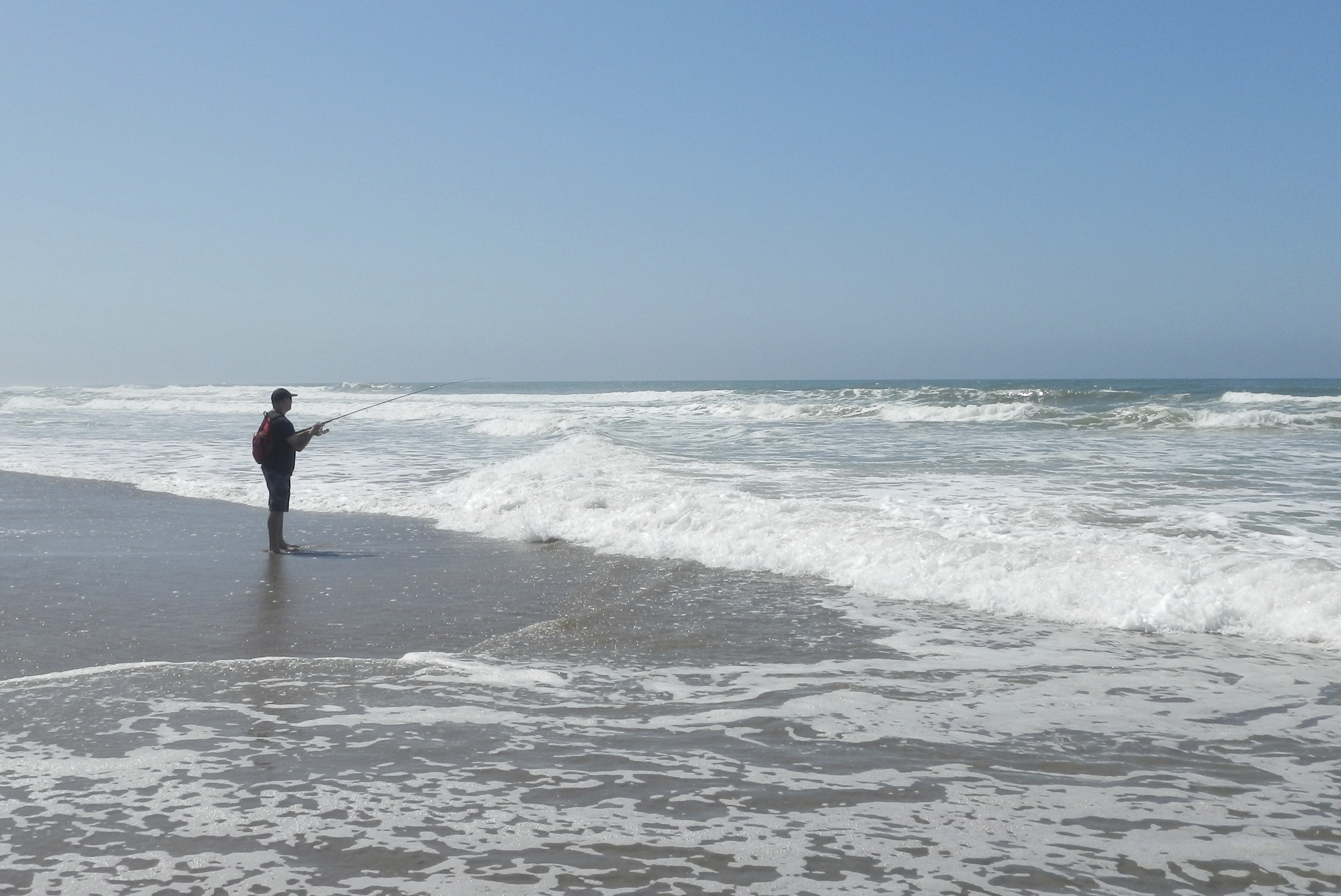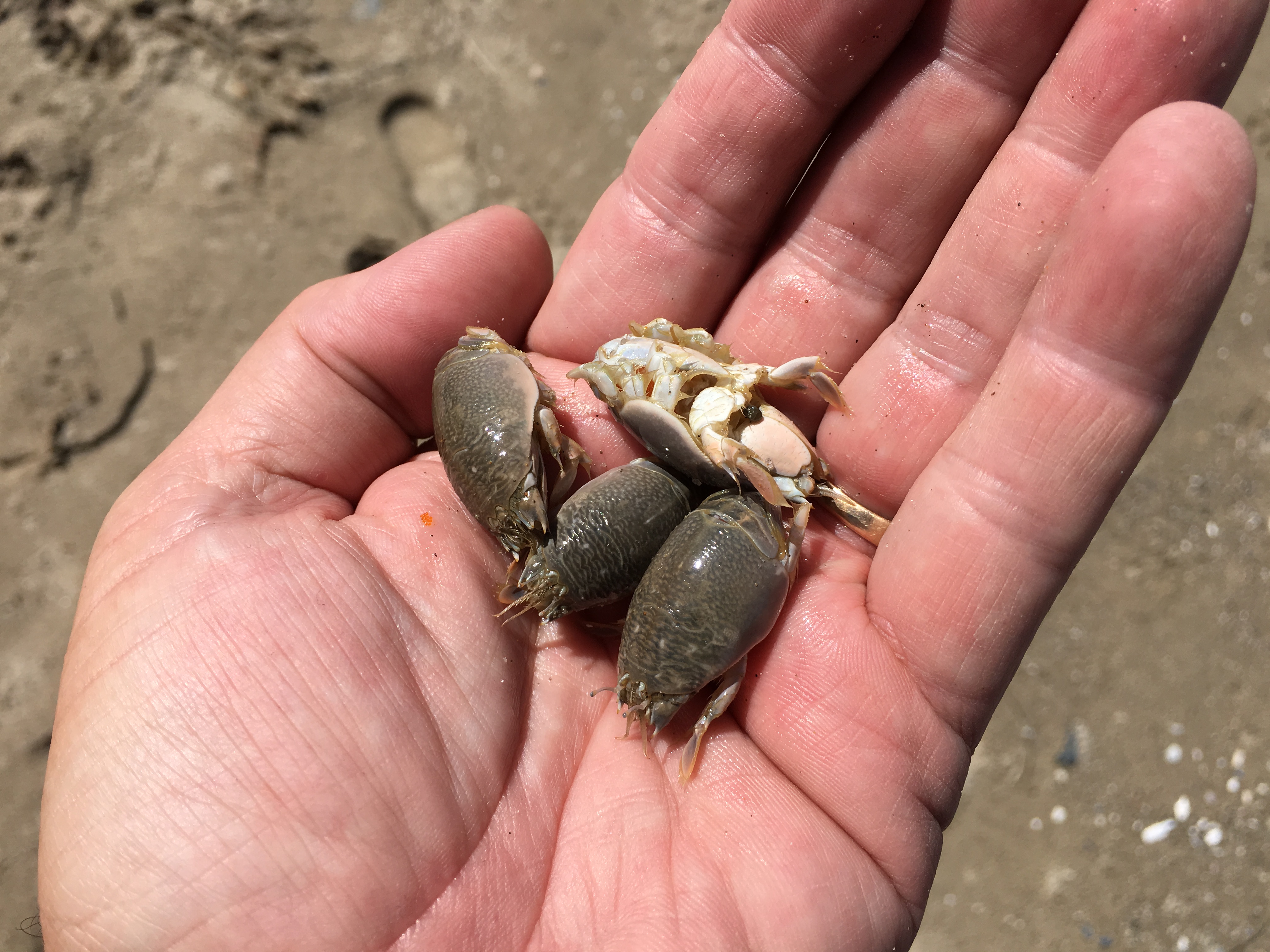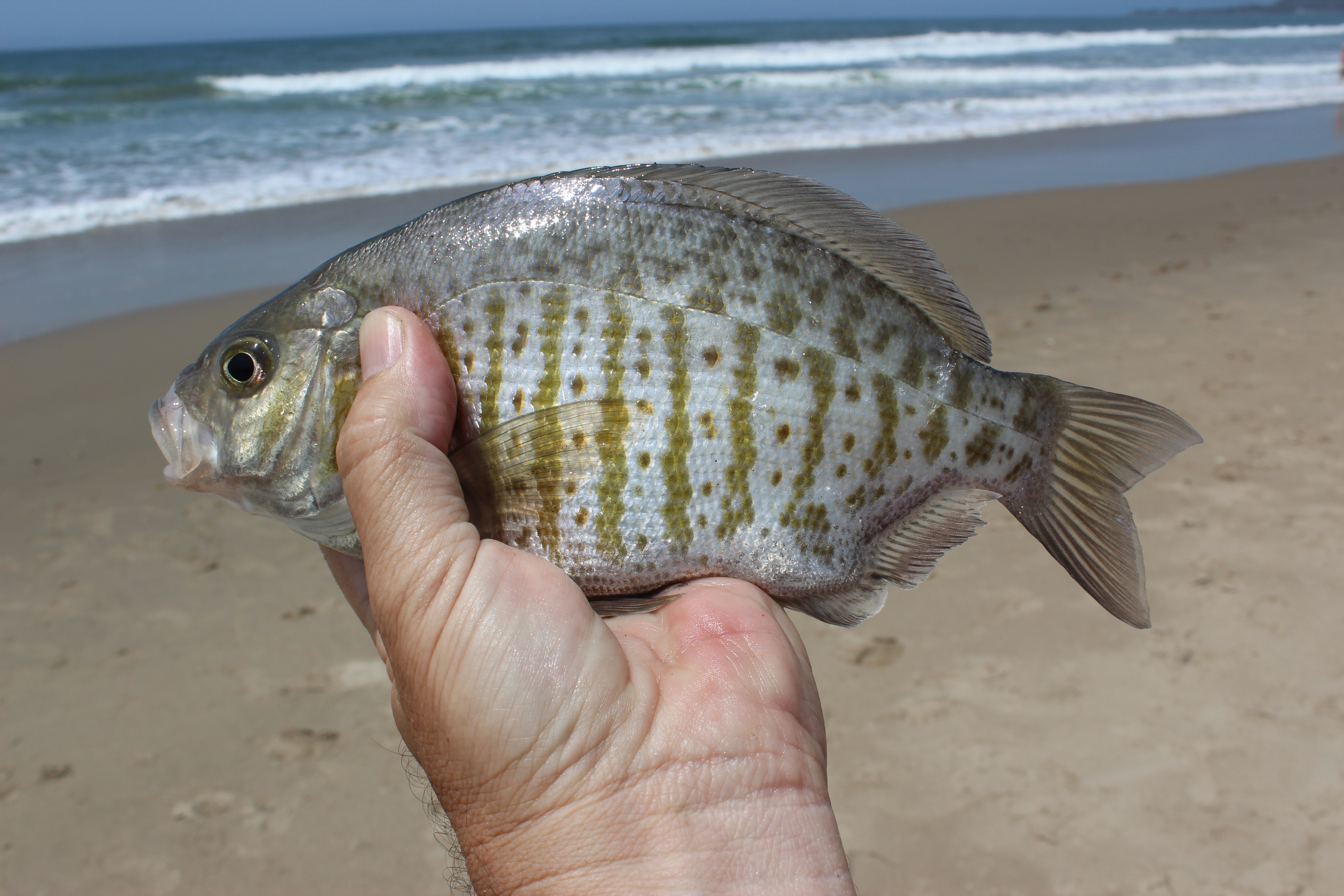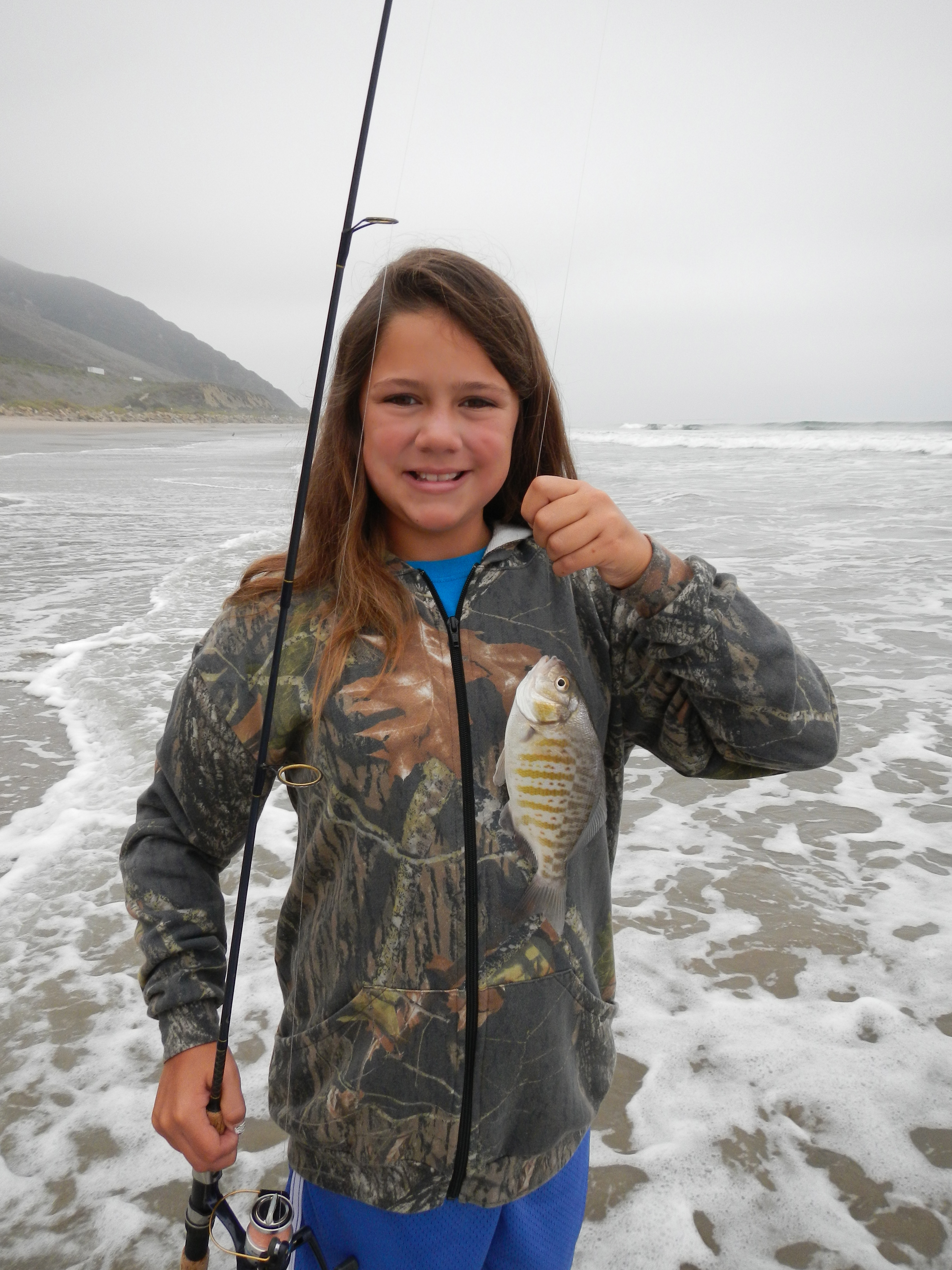All Ashore Who’s Fishing The Shore

Hey, it’s California, so why not celebrate this Christmas Day by thinking about fishing a SoCal beach in your bare feet! Here’s our lead writer Tim Hovey. Happy Holidays!
By Tim E. Hovey
When I was younger, I completely immersed myself in all types of fishing.
Back then, it was all about catching the most and the biggest fish. I competed with friends and family, learned absolutely everything I could and took pride in knowing that in almost all angling situations, I could catch fish. My obsession with fishing was the driving force behind my becoming a fisheries biologist.
These days I fish for a different reason. I find that when I’m able to break away for a few hours, I do so to relax. To me, nothing beats shedding my shoes, walking through the sand and letting the cool Pacific wash over my bare feet. When it comes to recharging my batteries, I grab my surf gear and head to the shore.
The coast is where fishing started for me. I honed my angling skills at the beaches of Santa Barbara, Ventura and San Diego as a boy. I refined my terminal gear, tried different types of bait and I caught my first fish on an artificial lure wading in the Pacific.

COASTAL SHORE FISHING IS not just a summertime activity. If you watch the tides and water temperature, you can catch fish year-round. Cooler winter air temperatures mean that, at times, you’ll have the beach all to yourself.
What can be better than no crowds or wayward surfers trying to ride waves you’re casting into? The water will be a bit colder, but cold is all relative to us Californians. Wintertime surf fishing sessions are a great way to just unwind.
I normally try to fish a low tide coming into high. I’ve noticed this tide alignment will provide me with cleaner water to fish in and allows me more time at the shore. While I do normally try and fish this tide, alternate ones don’t stop me.
Water movement over the sand crab beds will keep fish feeding no matter the tide. I tend to search out these beds when water conditions are varied and begin fishing there. Sand crabs buried in the sand are usually pretty easy to spot.
When an incoming wave recedes, crabs will expose their feeding appendages, filtering the water for particles of food. Thousands of feeding crabs will leave tiny channels or “V’s” in the wet sand. Find these feeding patches and fish will always be nearby.
My standard bait for fishing the surf is the Berkeley Gulp! 2-inch Sandworm. However, there are times that I prefer using live bait available right there at the shore. I’ll search the sand crab beds by grabbing a handful of sand as waves move over the crabs. I like smaller crabs loaded with brightly colored orange eggs. If I can find a newly molted or soft-shell crab with eggs, I can almost guarantee a hookup.

WHILE A NUMBER OF fish species cruise the surf looking for food, the most common I encounter in the areas I fish is the barred surfperch. These fish are members of a family that actually gives birth to fully formed live fish that are ready to swim and feed as soon as they leave the female.
It isn’t out of the ordinary to catch pregnant females plump with baby fish during the spring and summer. During our summer fishing trips to the shore we almost always practice catch and release.
The barred surfperch is a voracious predator of the shore and can seriously be considered the piranha of the coast. They are agile and successful in an environment that is chaotic and constantly moving and changing.
Surfperch are habitat specialists and have made the churning surf their home. Riding incoming waves, schools of surfperch quickly search the temporarily exposed shore for sand crabs and sand worms, riding the receding waves back to deeper water seconds later.
Their ability to navigate in only inches of water puts barred surfperch in easy casting range of shore anglers. I use a Carolina rig and concentrate my casts in the white frothy water of a shorebreak wave and let the churn of the surf roll my offering in the shallows. Bites can be subtle or violent. Making sure you fish a tight line can be the difference between a missed strike and a fish.
IN LATE FALL I grabbed two rods and headed to the coast. The evening before I checked the tides and noticed that everything looked good for a morning session at the beach. The low air and water temperatures meant I’d likely have it all to myself.
I pulled up to the shore, donned a second sweatshirt and grabbed my gear. The low tide was coming to high and would be good moving water for a few hours before it slacked off at full tide. Two hours was all I really needed.
In bare feet, I walked to the water – and nearly abandoned the day once the frigid surf hit my legs. But once I adjusted to the cold, I watched the water for a few sets. A large wave broke early and sent acres of frothy white water to the sand.
The cast was automatic and I engaged the reel once the weight hit the water. As I ran the line over my index finger and under my thumb, I could feel the approaching water move the weight and the bait over the sandy bottom. The bite was subtle.
The tight line twitched slightly and I instantly set the hook. The angry tugging at the end of the line made me smile. Thirty seconds after casting into the white water, I was unhooking the first barred surfperch of the morning.
With short casts and tight lines, I kept catching fish. I also added a nice corbina to the surfperch count using a soft-shelled sand crab I caught in the sand. None of the fish were monsters, but the action was consistent, which is what I strive for as an angler.
I TAKE GREAT PRIDE in knowing that no matter where I cast a line, I can catch fish consistently. In over 40 years of chasing anything that swims, I have developed techniques and acquired knowledge of what works and what doesn’t. I learned a long time ago that catching fish consistently is the true measure of angling success.
For over an hour I was the only one on the beach. Even alone, I kept track of how many fish I had caught. It’s just the competitor in me. As the tide came to high and the beach began to shrink, I decided to call it a day.
Back at the truck, I sat on the tailgate and watched the waves. The fishing had been good and the short shore session had definitely recharged my batteries. By choice, I don’t have a lot of stress in my life, but I’ve noticed that the drive home after a fishing trip to the beach is more than calming.
I’m grateful that my parents allowed me the freedom early in life to explore the coast on my own. I seriously do not remember any trips my family took just to go to the beach. Back then, if I wanted to fish the shore, my brother and me would simply jump on our bikes with our gear and ride the few miles to the coast. That early freedom certainly guided my future.
The trips now are more about relaxing and reflecting. I think about my dad, who passed in 2007 and how proud he’d be of my growing daughters. I think about how I continued that fishing tradition with them, teaching them to fish at this very coast.
And at times, I just come down to the shore to feel the sand beneath my feet and the cold Pacific wash over my legs. And it doesn’t matter if I’m fishing with friends or fishing alone, I will always keep count of my catch. That will never change. CS





